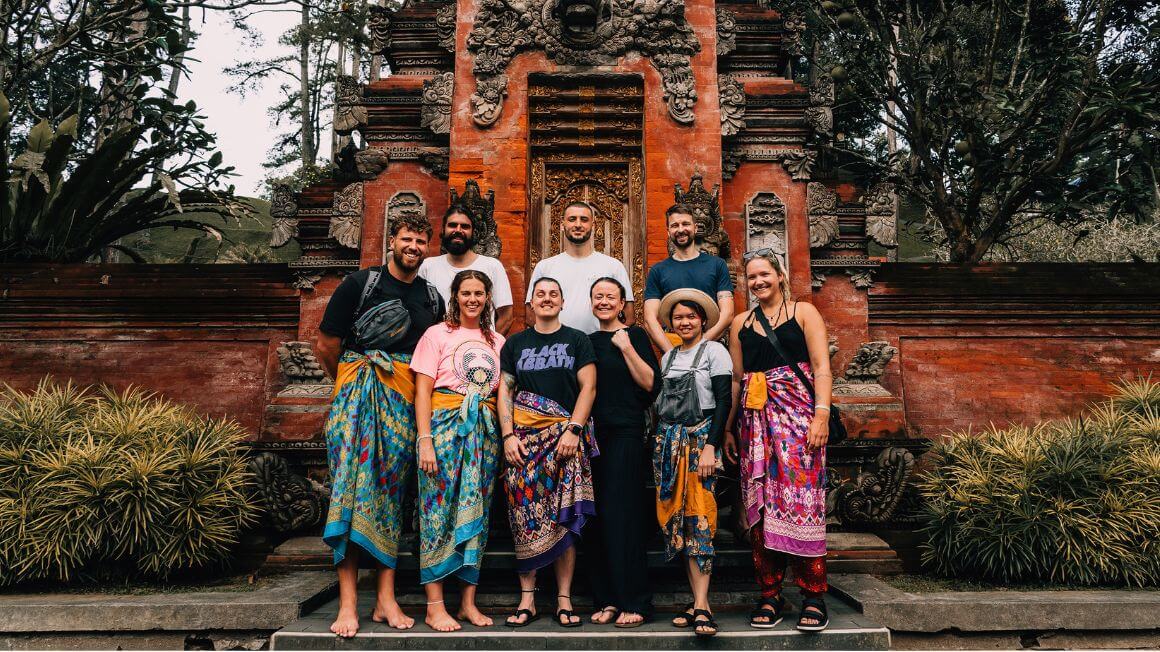People often say that if you don’t like the weather in Australia, just give it a minute, and it will change.
And honestly, they’re not wrong. This place has everything: tropical rainforests, a dusty outback, and chilly alpine peaks. It’s as diverse as the marine life swimming around the Great Barrier Reef. But hey, that’s what you get when your country also happens to be an entire continent stretched across several time zones, right?!
You know how Manhatten has a totally unique vibe from Brooklyn? Well, it’s kinda the same thing here. Each region in Australia has its own climate and atmosphere, dependent on the season. As you might guess, the weather in Australia sits on a very very wide spectrum.
That said, The Land Down Under has a good rep for sunny skies and warm weather. Unsurprising, considering the country stretches along nearly 35 thousand kilometers of coastline along the Pacific, Southern, and Indian Oceans. And that’s not even counting the offshore islands and tropical islets.
From surfing on the Gold Coast to cuddling up in the Snowy Mountains, each region and season brings its own charms. Because of this, the best time to visit Australia really comes down to what you want to get out of the experience (and, of course, where you go).
Bottom line? Every season is an epic time to visit. If that just pushed you over the edge of confusion – I’m here to help. Follow along as I navigate when – and when not to – plan your Aussie adventure.
Best Time to Visit Australia – September to November (Spring)
Best Time to Go to Sydney – September to November (Spring)
Best time for Melbourne – March to May (Autumn)
Best Time for the Beach – December to February (peak Summer)
Best Time for Sightseeing – March to May (Autumn) and September to October (early Spring)
Cheapest Time to Visit Australia – May to August (Winter)
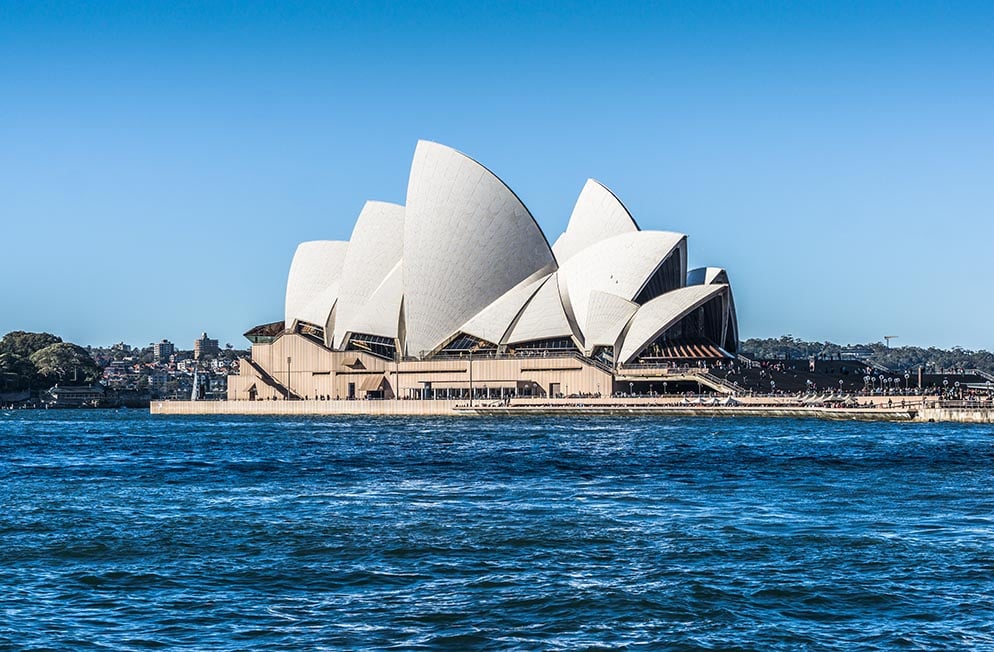
Image: Nic Hilditch-Short
The Broke Backpacker is supported by you. Clicking through our links may earn us a small affiliate commission, and that's what allows us to keep producing free content 🙂 Learn more.
- When is the Best Time to Visit Australia?
- When is The Cheapest Time to Visit Australia?
- When to Visit Australia – Weather by Month
- Best Time to Visit Australia by Place
- Best Time to Visit Australia For Parties and Festivals
- FAQs on the Best Time to Visit Australia
- Final Thoughts on The Best Time to Visit Australia
- Buy Us a Coffee!
When is the Best Time to Visit Australia?
Australia’s weather is all over the place. Season to season, it’s a wild ride. But that doesn’t really help the pedantic planners in us, does it? Do yourself a favour and open up a map to refer to alongside this article. It might help things make more sense when you’re trying to plan your trip to Australia.
Along the southern coastline, cities like Melbourne and Sydney experience a clear summer and winter. Winter is at its wettest between June and August, and summer peaks between December and February. And yep, that means Christmas is celebrated on the beach here. Don’t knock it till you try it, mate!
But there’s a plot twist… Summer and winter only exist in the southern half of the continent. The northern part reaches close to the Equator, meaning things get ‘troppo’ in parts of the country. Hello, Great Barrier Reef! Here, there are only two seasons: wet (between November and March) and dry (April through October).
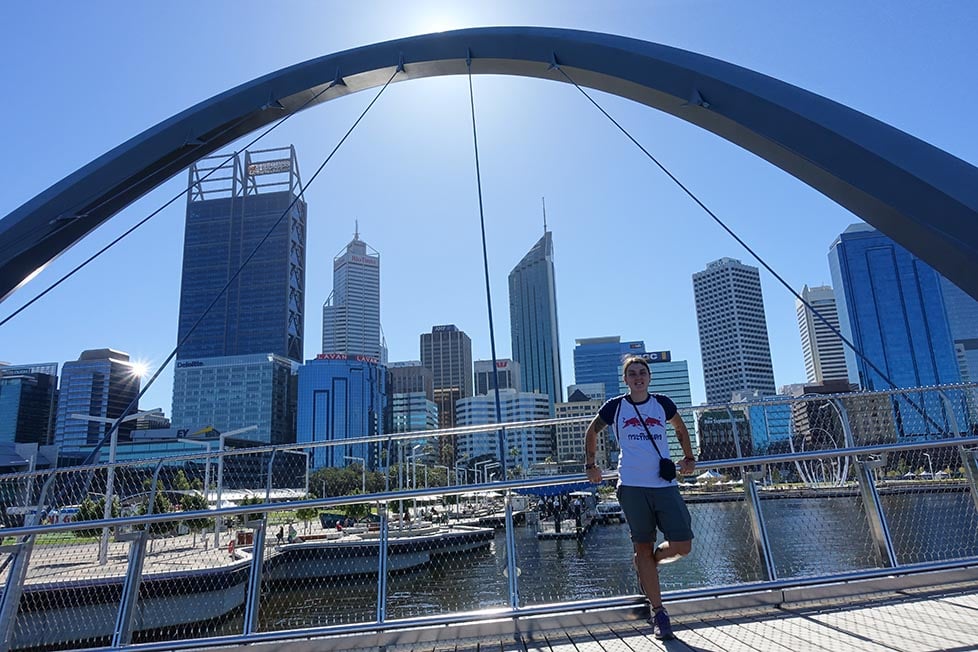
Image: Nic Hilditch-Short
Meanwhile, inland Australia is made up mostly of dry, arid outback. Extreme weather conditions come to life here – sweltering days and freezing nights. In other words? Desert.
Weather in Tasmania is cooler year-round, and the highlands experience a typically unpredictable climate. All in all, the best time to visit Australia really depends on where you visit.
In the article, I’ve broken down the cheapest times to visit the country, highlighted the weather month by month, and added some must-see festivals and events you might consider planning your trip around.
We’ll also explore the best times to visit three of the country’s most happening cities: Sydney, Melbourne, and Brisbane. These are the country’s three largest, and most visited cities when it comes to international tourism. Plus, I’ll toss in some top accommodation recommendations to fit every budget. But a heads up from the get-go, Aus is a pretty pricey country for budget travellers.
When is The Cheapest Time to Visit Australia?
First things first, Australia is by no means a cheap place to visit. Not only is it a serious trek from Europe or the US, but it also has a relatively strong currency to do us budget travellers dirty. Of course, what you spend depends on what you plan to do.
If you aim to dive the Great Barrier Reef, ride horses in the outback, and wine and dine at all the best restaurants in Sydney, you could be in for a proper financial crisis. If you’re more about relaxing on the beach – the good news is that beaches are free!
All that said, the cheapest time to visit Australia is in winter, between June and August. The peak summer season brings more tourists and as a result, higher prices. There are, of course, some good deals you can snatch up mid-season, too. If you’re able to wait for last-minute specials, keep a good eye out and set your flight tracking alerts and consider where you stay in Australia.
When to Visit Australia – Weather by Month
If you’re reading this article, chances are you’ve already got a rough idea of when you can visit Australia. Maybe it has to do with school or work holidays, or a family event you’ve RSVP’d to.
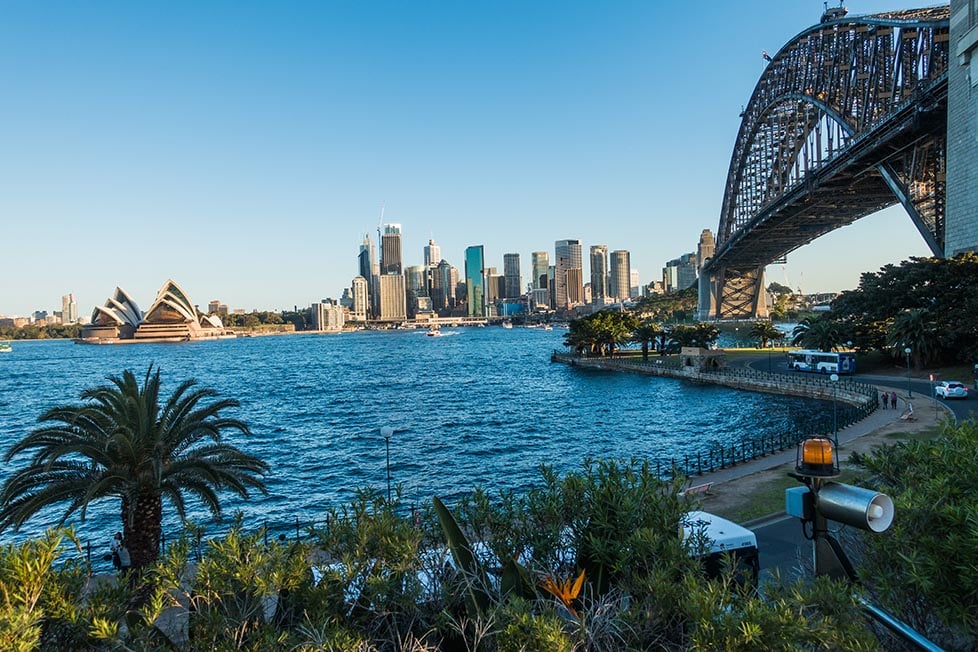
Image: Nic Hilditch-Short
No worries, though. Good times will follow whenever you visit. But if you do want a bit more info, here’s a monthly breakdown of the weather in Australia.
Side note: When it comes to rainfall for each month, keep in mind that tropical northern Australia gets more summer rains (during the wet season).
January in Australia
- Average Max Temp – 30.5°C / 86.9°F
- Rainfall in Days – 8-13 days
January is peak summer in Australia, which means school is out, locals take time off work, and tourists flood the country for its sunny weather. Northern regions like Darwin and Cairns experience their wet season, with tropical downpours and humidity so dense you’ll wonder if your deodorant ever had a fighting chance. But for southern cities like Sydney and Melbourne – it’s beach weather!
Since it’s peak tourist season, prices for accommodation and flights are at their highest. Summer is also busy with events and festivals in Australia. Some of the more notable ones include Australia Day (26th July), which is pretty much Aus’s equivalent of the Fourth of July (though it has been a little controversial recently), and the Sydney Festival, which celebrates the arts and culture of the capital city. Sports fanatics might be interested in The Australian Open, the well-known tennis tournament held in Melbourne between January and February.
February in Australia
- Average Max Temp – 29.9°C / 85.9°F
- Rainfall in Days – 7-12 days
Summer continues well into February, with weather similar to that in January. Northern Australia is still in its rainy season, while the south stays warm and (mostly) dry. Sydney and Melbourne’s beaches are still pulsating.
While a lot of Christmas and New Year tourists start to head home and school holidays come to an end, prices start to dip slightly. Still, this is by no means the cheapest time to visit Australia. I’d still consider this peak season and if you’re a solo traveller in Australia it might just be the best time time meet people.
Mardi Gras brings fleeting crowds to Sydney, while the National Multicultural Festival attracts appreciators of art, music, and culture to Canberra. During February, there are more local tourists floating around than international ones.
March in Australia
- Average Max Temp – 28.5°C / 83.2°F
- Rainfall in Days – 7-8 days
March marks the beginning of autumn in Australia, but it is still pretty hot. The north gets a bit of respite from the rains, while the south hits the perfect temperature, in my opinion. This is one of the best months to explore the mountains and countryside around the cities without expiring from the heat. And, of course, the beach is always a solid option when it comes to the most beautiful places in Australia to visit.
Tourist numbers begin to drop, and with them, so do prices. Canberra is buzzing this time of year. The city hosts art festivals, comedy events, balloon spectacles, and even a craft beer and cider festival, all within a short window of one another.
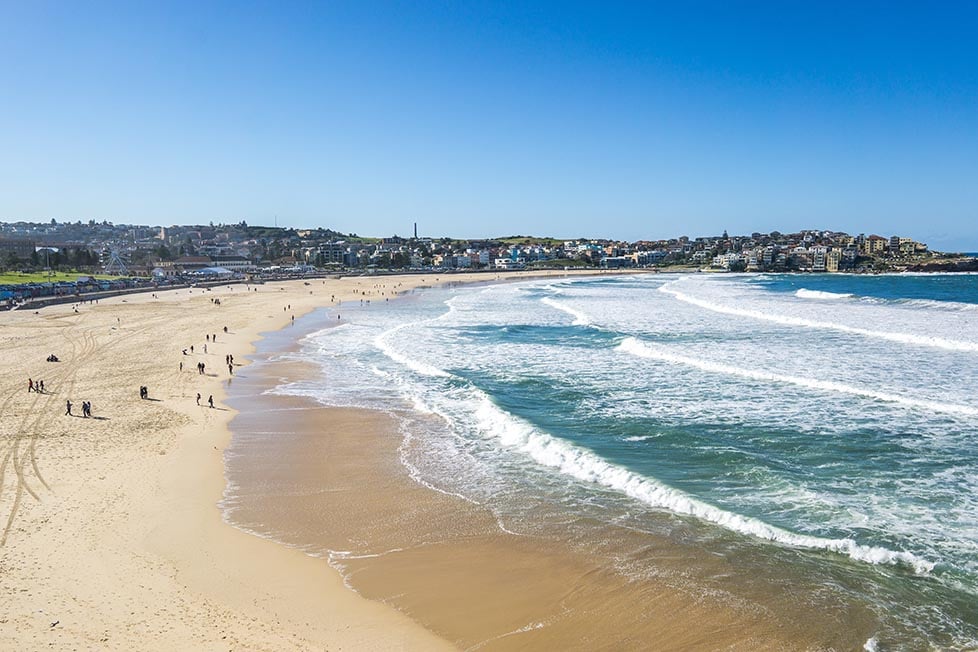
Image: Nic Hilditch-Short
April in Australia
- Average Max Temp – 25.8°C / 78.4°F
- Rainfall in Days – 6-7 days
Mid-autumn in Australia brings mild and comfortable weather to the touristy parts like Sydney, Perth, and Melbourne. Temps cool down significantly, but it’s usually still warm enough for a swim. The dry season starts to solidify the ground in the north, which brings its own tourist influx.
Most locals celebrate Easter, which means you can expect a slight increase in domestic tourism (and flight prices). Wine and Harvest Festivals (meaning it’s a great time for a wine tour in Aus) and the International Music Festival heads to Canberra.
On a more serious note, the country commemorates Anzac Day to remember all their countrymen lost at war. This is a big deal in the cities, with local ceremonies, parades, and smaller events hosted nationwide. If you want to coincide your autumn adventure with a bit of culture, this is one of the best times to visit Australia.
May in Australia
- Average Max Temp – 22.4°C / 72.3°F
- Rainfall in Days – 6-7 days
The air is crisp and clear through May. It’s the height of autumn, and the southern regions are now cool, while the north is dry. Southern cities like Sydney, Melbourne, and Perth attract city sightseeing and adventure seekers who can explore the city and its surroundings without the crowds and heightened prices of summer.
An incredible event of light, music, and food comes to Sydney sometime between May and June. VIVID Sydney brings the Sydney Opera House and Harbour Bridge to life with colour and dancing lights. Take it from me: this is a spectacle worth planning a trip around.
June in Australia
- Average Max Temp – 19.7°C / 67.4°F
- Rainfall in Days – 8-10 days
By June, winter is in full force in Australia. The south is pretty cold, but it can’t really be compared with the northern hemisphere during winter. Sydney is always a bit warmer than Melbourne and Perth (if you’re waying up Sydney vs Melbourne during the winter). Up north, Cairns and Darwin are in full-blown dry season, which makes this a great time for outdoor adventures in the tropics.
It’s officially off-season for tourists, which means quieter cities, lower prices (and fewer beach days). Ski season kicks off in New South Wales and Victoria. Western Australia’s Food and Wine Festival is held in Perth—as if there wasn’t enough delicious food around these parts!
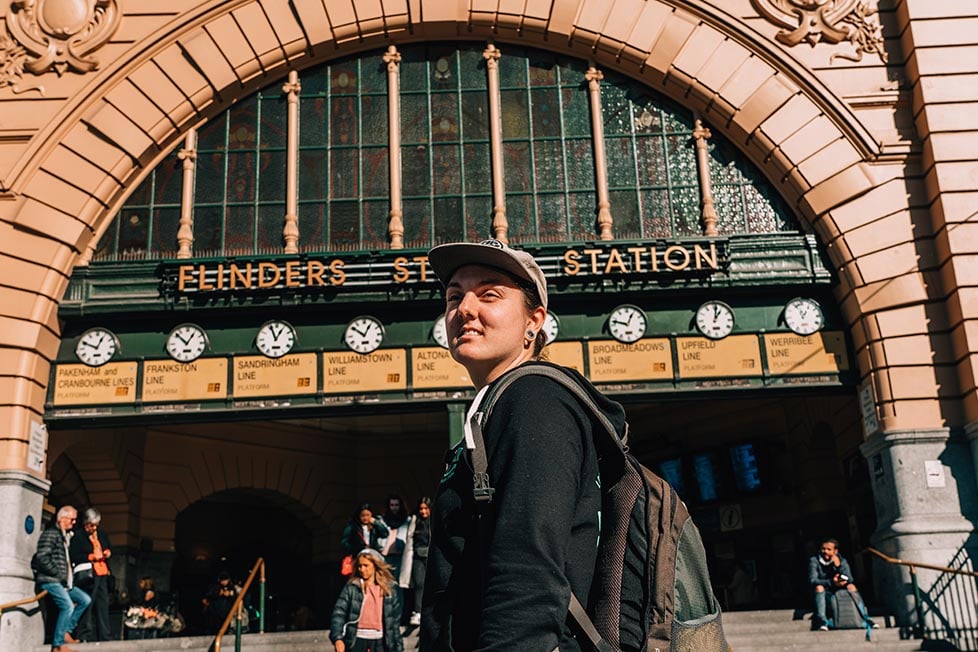
Image: Nic Hilditch-Short
July in Australia
- Average Max Temp – 19.3°C / 66.8°F
- Rainfall in Days – 8-11 days
Peak winter sticks around through July, with the southern states experiencing their coldest days. Contrary to popular belief, it does actually get cold. Melbourne and Perth can even dip into the single digits! Luckily, Sydney remains manageably cool. But it is the time when you’ll find Australia the least expensive.
Cities are quiet in the south, but ski resorts like Perisher and Thredbo are in full swing. It’s the best time to visit Australia’s Alps. Meanwhile, up north, Darwin and Cairns are sunny and dry, making it the perfect month to visit the Great Barrier Reef of Kakadu National Park.
The Bondi Festival, a three-week arts and performance festival, takes over Sydney’s beachy neighbourhood, while NAIDOC Week, a week-long celebration of Australian Indigenous culture, is held nationwide.
August in Australia
- Average Max Temp – 20.8°C / 69.4°F
- Rainfall in Days – 8-10 days
August is still wintery, although Melbourne, Sydney, and Perth’s temperatures begin to rise towards the end of the month. The north is still dry and sunny, with clear water for diving the reefs and perfect weather for any central outback adventures.
Cities are in low tourist season, but ski resorts are buzzing for their last few weeks of operations (usually with domestic tourists, or those on Working Holiday Visas wanting to do a snow season). The main event for the month is held in the north. Darwin Festival celebrates all things local arts, culture, and food over a couple of weeks.
September in Australia
- Average Max Temp – 23.6 °C / 74.4°F
- Rainfall in Days – 6-8 days
Spring is sprung in late September, but the entire month is one of new green leaves and budding flowers down south. Sydney and Melbourne are thawing after winter, bringing some low-season tourists into the city. It’s the perfect time for hiking and sightseeing, and there are plenty of events held as spring kicks in. It’s the perfect time to be backpacking in Oceania.
Whale-watching season is in full swing from Sydney all the way up along the Great Barrier Reef. The Royal Adelaide Show is a highlight along the southern shoreline, bringing with it a week of kid-friendly rides, food, and fireworks into the city. Canberra celebrates Floriade, a flower-art festival held in its famous park.
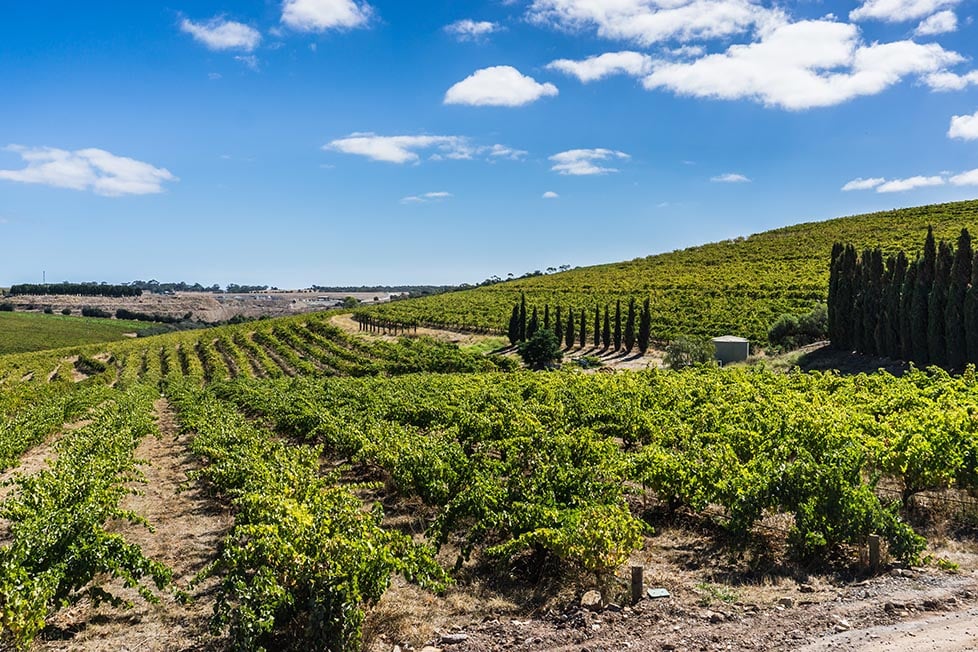
Image: Nic Hilditch-Short
October in Australia
- Average Max Temp – 26°C / 78.8°F
- Rainfall in Days – 7-9 days
October finally feels like real spring. The weather in Australia is warming up, climbing into the 20s (high 20s at times), and outdoor events and festivals are bouncing into calendars like kangaroos at a BBQ. The beaches start to fill up with tourists as prices start to rise in anticipation of peak summer.
During this month, you could catch the Adelaide Film Festival, The Noosa Triathlon, or OzAsia Festival.
November in Australia
- Average Max Temp – 27.9°C / 82.2°F
- Rainfall in Days – 8-9 days
November is the first actual month of summer. Crop tops and swimsuits are the national outfits as the weather heats up in Sydney, Perth, and Melbourne. Meanwhile, up north, Cairns and Darwin brace themselves for the wet season. Brisbane is as hot as ever, with humidity ramping up to make every step feel like you’re wading through soup.
The Melbourne Cup, Australia’s premier horse racing event, brings a burst of activity into the city. It’s also the month the Australian PGA Champs are held, making it a popular time for sports fans to visit.
December in Australia
- Average Max Temp – 29.4°C / 84.8°F
- Rainfall in Days – 8-9 days
December is the ultimate month of summer and festivities in Australia. Unfortunately, this does mean higher prices and holiday crowds. The southern cities are blessed with beach day after beach day, while the north gets hit with its annual tropical rains. Things might get soggy, but these rains do wonders for the lush rainforests and waterfalls.
Holiday crowds descend upon the beaches as families get together to celebrate Christmas and New Year’s. Speaking of New Year’s, NYE in Sydney is a spectacle, with fireworks over the harbour and lively energy at every bar and nightclub.
Best Time to Visit Australia by Place
I’ve said it before, and I’ll probably say it again: the best time to visit Australia depends on where you’re headed. Generally speaking, the best time to visit the south is during spring and autumn, which runs from November to March.
The north is at its most beautiful during the dry season, between May and October. In the central Outback, the best months are when the weather is cool, which also falls between May and October.
Best Time to Visit Sydney
Sydney is Australia’s poster child city, which means it’s on just about every tourist’s hit list because there’s plenty to do. It’s an effortlessly cool city that brings relaxed beach life into the mundane of every day. Locals here hit the ocean for cold water dips before work and afternoon paddles in the bay after work.
In Sydney, summer is all about beach vibes and busy bars. The city serves up a year-round dose of art, culture, and coffee, but things really come alive around November through March. The weather peaks, but so do the prices—but hey, paradise has to have a cost, right?
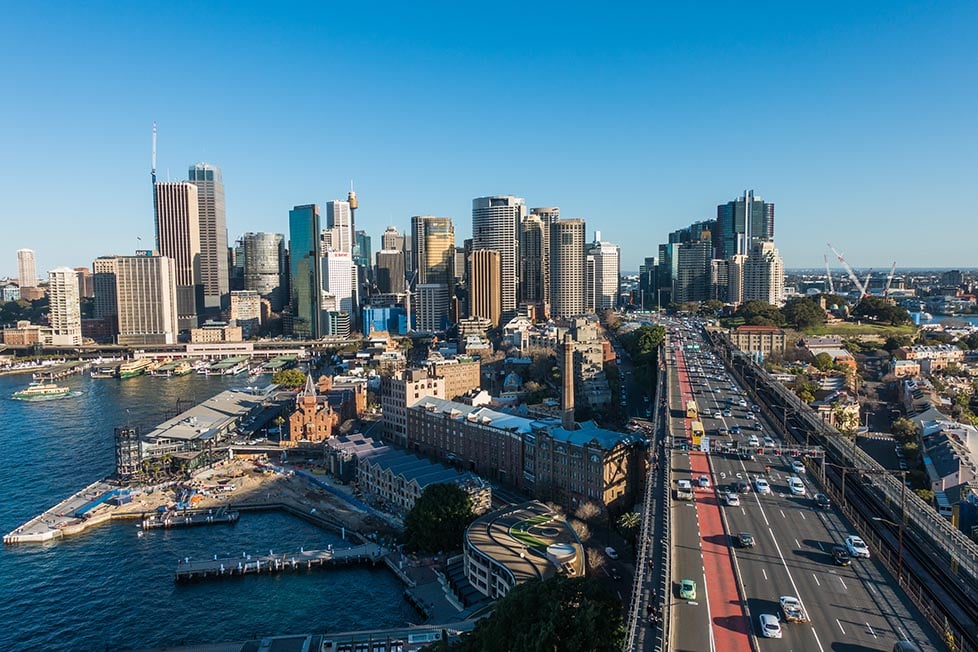
Image: Nic Hilditch-Short
If you prefer things a bit more chilled (weather and vibe-wise), Autumn (March to May) is the sweet spot. Accommodation is more affordable, and the tourist floods won’t get in your way.
Spring, between September and November, is another top time to visit Sydney. Warmer weather brings the floral blooms to life and is excellent for spending time outdoors without it being too.damn.hot.
I’m not opposed to Sydney in winter, either. Cooler weather means fewer tourists, low prices, and, ultimately, a more local city experience.
Best Time to Visit Brisbane
Geographically speaking, Brisbane sits on Australia’s central eastern coastline, between the Gold Coast and the Sunshine Coast—and this says it all. Brisbane is the sunshine capital of Australia, experiencing a subtropical climate. With around 300 days of annual sunshine, being cold is not a common experience around here.
With the Brisbane River winding through the city, it’s all about riverside walks, alfresco dining, and an all-around, easy-breezy outdoor living scene.
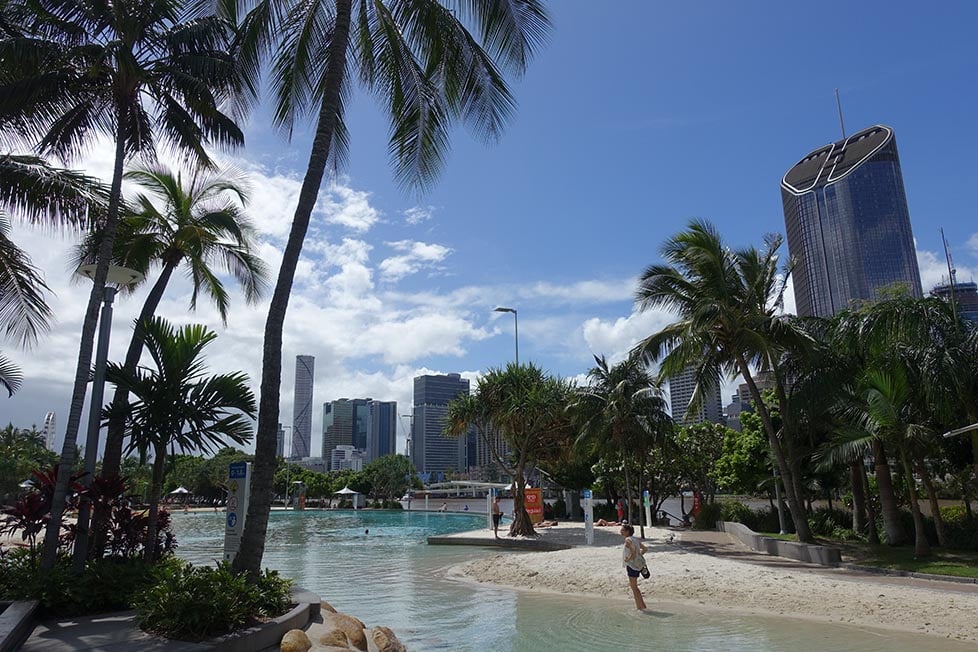
Image: Nic Hilditch-Short
When summer kicks in, so do Brisbane’s festivals and parties. December through February is peak summer here, bringing with it some tropical storms and humidity.
If you’re not ok with having frizzy hair and extra-dewy skin every time you leave the air conditioning, you might prefer the dry months between March and May or between September and November. During these months, the weather is still warm, there are fewer crowds, and you aren’t guaranteed to be stuck in a monsoon shower every few hours. Plus, you can still visit all the best places in Brisbane in winter.
When it comes to festivals, the Brisbane Festival is a favourite in Queensland. It is a massive two-week festival of art, food, and music that takes place in the city in early spring (September).
Best Time to Visit Melbourne
Melbourne is a city of booming art, culture, and coffee snobs (and I say this in the kindest way possible). Street art covers any free wall space; live music fills the air at every corner and cafes that could convert even the most dedicated tea drinkers spill onto the street.
Saying the weather in Melbourne is unpredictable is an understatement. While the city experiences all four seasons over a year, it can also give you a taste of them all in one day.
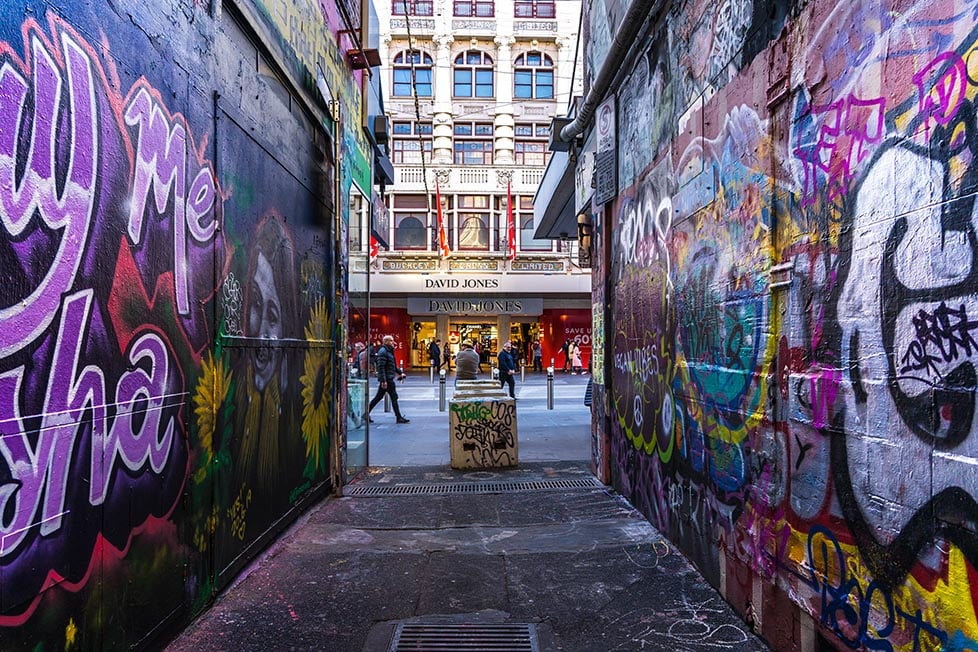
Image: Nic Hilditch-Short
Summer months between December and February are the season for rooftop bars and outdoor festivals. But brace yourselves for heightened prices for accommodation, food, and flights. I’m always a fan of a mid-season adventure. Autumn brings cooler days, colourful leaves, and a ton of food and wine festivals.
Spring in Melbourne is all about the Melbourne Cup, a massive horse racing event that gets the whole city’s energy racing. Winter is pretty cold here, but it’s not all doom and gloom. With over two thousand coffee shops, a chilly day is the perfect excuse to settle into a cafe and explore art galleries and museums without navigating summer crowds.
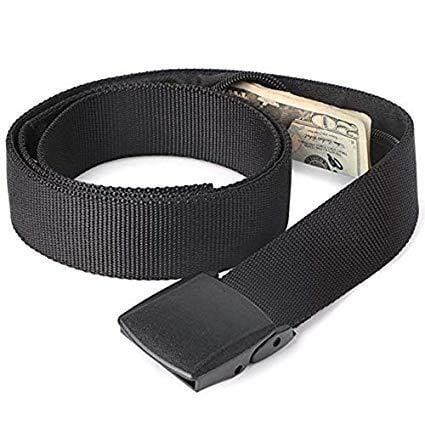
Stash your cash safely with this money belt. It will keep your valuables safely concealed, no matter where you go.
It looks exactly like a normal belt except for a SECRET interior pocket perfectly designed to hide a wad of cash, a passport photocopy or anything else you may wish to hide. Never get caught with your pants down again! (Unless you want to…)
Hide Yo’ Money!Best Time to Visit Australia For Parties and Festivals
I always say there is no wrong time to visit a country like Australia. But if you’re looking to attend festivals, gatherings, and sporting events, my statement would be wrong. December to February (through mid-summer) is the best time to visit if you want your trip to coincide with music festivals and concerts, gallery openings, and sporting events.
With it being the most touristy month, you can expect the bars and nightclubs to be at their fullest around summer, too. Of course, this is not the cheapest time to visit Australia. But hey, you can’t put a price tag on a good party, can you?

Photo: Alexandria Zboyovski
Here are some events worth planning a trip around:
- The Australian Open – Melbourne transforms into a global sports hotspot in January, as the Australian Open Tennis Tournament serves non-stop action (mind the pun). Whether courtside or sipping G&Ts in the fan zone, it’s one of the most exciting times in the city.
- Sydney Festival – During January, this event brings art, music, and dance to every corner of Sydney. From street performances to public art installations, this festival is as impressive as the city that hosts it.
- Adelaide Fringe Festival – Adelaide goes full cultural in February and March, with the biggest art festival in the Southern Hemisphere. In the wake of the iconic Edinburgh Fringe, you can expect everything from cabaret to comedy to dance routines over the course of a month.
- Sydney Gay and Lesbian Mardi Gras – Sydney’s equivalent of Pride Week takes the form of a colourful Mardi Gras Celebration between February and March. It’s a party of pride, diversity, and unapologetic fun. And let me tell you, this city knows how to throw a party!
- Australian Grand Prix, Melbourne – Formula One brings Melbourne to the international motorsports racing stage every March. But it’s not just about fast cars. Celebs flock to the city to attend glamorous events and sip champagne on lush rooftops as the streets buzz with activity and excitement.
- Perth International Arts Festival – For the month of February, Perth transforms into an open-air gallery. The country’s longest-running cultural festival brings outdoor performances, abstract art installations, and musical performances to the city.
- VIVID Sydney – One of the best family-friendly events in Australia, VIVID is the famous Sydney light festival. It turns the coldest nights of May and June into a luminous display of choreographed colour, light, and music. It’s the ultimate excuse to avoid the summer crowds and wander the wintery streets after dark.
FAQs on the Best Time to Visit Australia
Don’t Forget your Australia Travel Insurance
Unfortunately, things can go wrong when you least expect it. This is why good travel insurance is essential before you head on your trip to Lombok.
ALWAYS sort out your backpacker insurance before your trip. There’s plenty to choose from in that department, but a good place to start is Safety Wing.
They offer month-to-month payments, no lock-in contracts, and require absolutely no itineraries: that’s the exact kind of insurance long-term travellers and digital nomads need.
SafetyWing is cheap, easy, and admin-free: just sign up lickety-split so you can get back to it!
Click the button below to learn more about SafetyWing’s setup or read our insider review for the full tasty scoop.
Final Thoughts on The Best Time to Visit Australia
Let’s be honest. Wherever you go at whatever time of year, you’re bound to have a great time exploring Australia. But it has to be mentioned once again that this massive country has huge disparities in weather from one side to the other.
The best time to visit Australia depends on whether you’re chasing the summer beach scene, diving into the depths of the Great Barrier Reef, or riding horses through the Outback.
Brisbane has subtropical warmth at its fingertips, and its outdoors is best explored in spring and autumn. For tropical heat, Cairns is the gateway to the Great Barrier Reef, best during the cooler, dry season.
The same goes for Darwin. The capital of Australia’s Northern Territory is known for its tropical climate and the Kakadu National Park. The Outback, around Uluru and Kings Canyon, is best explored in winter when temperatures are more bearable.
Whenever you visit the land down under, you can rest assured you’ll experience some unforgettable outdoor adventures and enjoy plenty of classic Aussie charm, ey!
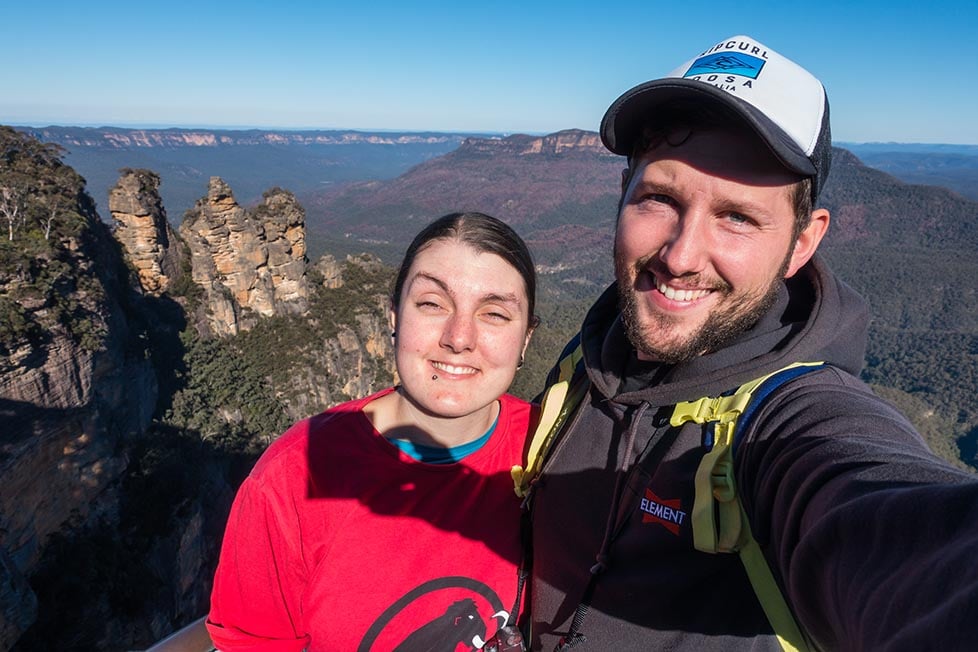
Image: Nic Hilditch-Short
- Check out our ultimate guide to backpacking around Australia.
- Check out where to stay in Australia for some dope accommodation
- Figured out where you wanna stay? Now it’s time to pick the perfect hostel in Australia.
- Swing by our super epic backpacking packing list to prep for your trip.
Buy Us a Coffee!
A couple of you lovely readers suggested we set up a tip jar for direct support as an alternative to booking through our links. So we created one!
You can now buy The Broke Backpacker a coffee. If you like and use our content to plan your trips, it’s a much appreciated way to show appreciation 🙂



